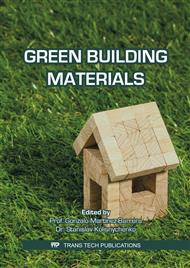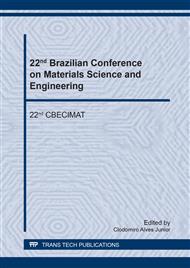p.115
p.120
p.125
p.131
p.137
p.142
p.148
p.153
p.158
Use of Waste from Construction and Demolition in the Manufacture of Soil-Cement Bricks: A Sustainable Alternative
Abstract:
The search for preserving the environment and avoiding the scarcity of natural resources leads civil construction to seek new technical measures tending to the sustainability of its activities, among them, the use of soil-cement bricks and construction and demolition waste (CDW), contributing to the reduction of materials discarded and costs in the works. This research aims to partially incorporate CDW in the manufacture of soil-cement bricks, with 25% and 50% of the soil mass replaced. Soil and CDW mixtures with 8%, 10% and 12% of cement were submitted to compaction tests. Soil-cement and CDW-cement bricks were submitted to dimensional analysis, water absorption tests and simple compression strength at 14 days. The results confirmed the potential of the CDW as a partial raw material for the preparation of soil-cement bricks as the results of the absorption tests achieved desired results. The brick with 25% of CDW and 12% of cement presented the best resistance to compression. The use of CDW as a construction material enables the reduction of waste-disposal areas and provides the manufacture of environmentally sustainable materials.
Info:
Periodical:
Pages:
137-141
Citation:
Online since:
September 2018
Keywords:
Price:
Сopyright:
© 2018 Trans Tech Publications Ltd. All Rights Reserved
Share:
Citation:



